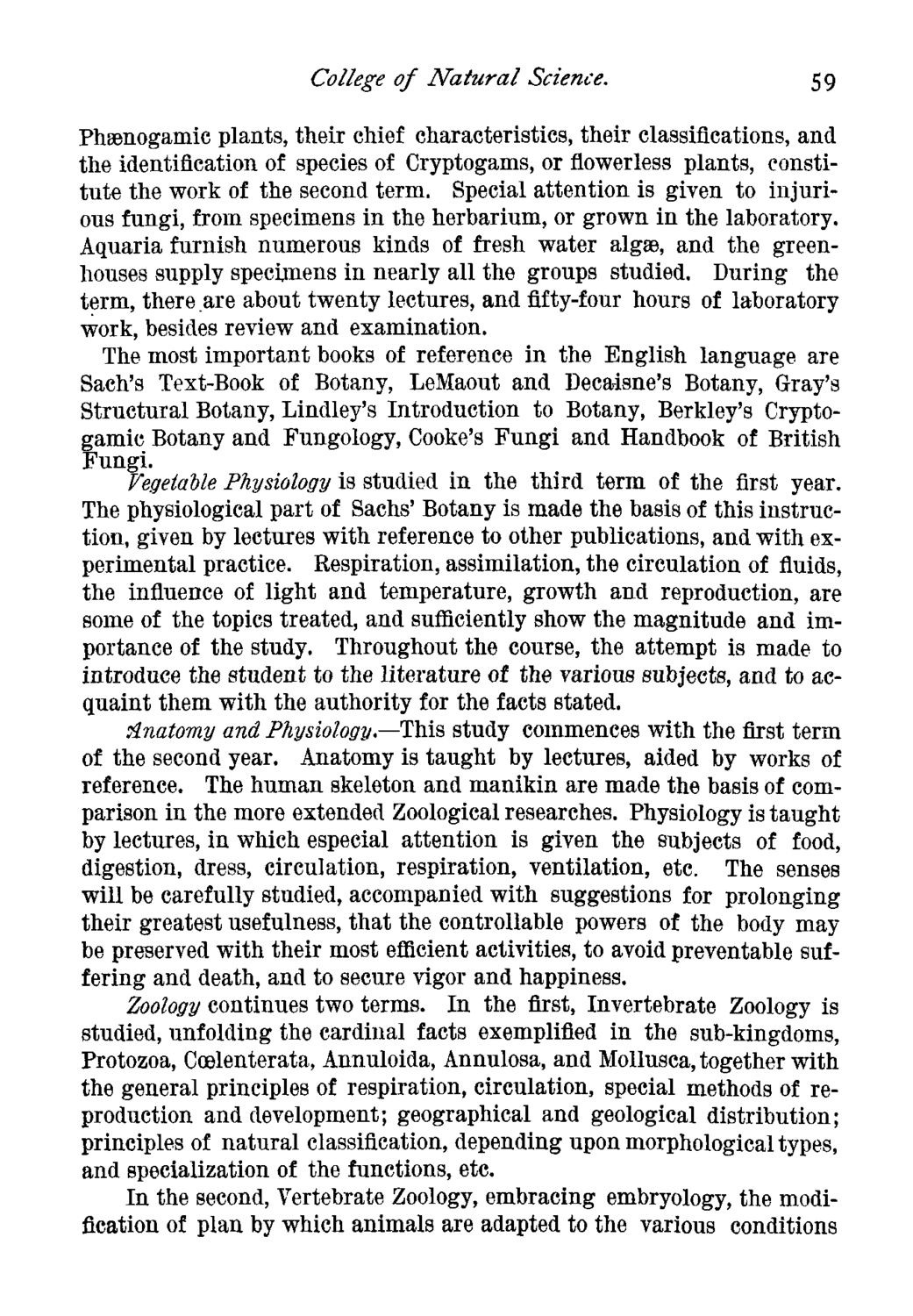| |
| |
Caption: Course Catalog - 1881-1882
This is a reduced-resolution page image for fast online browsing.

EXTRACTED TEXT FROM PAGE:
College of Natural Science. 59 Phsenogamic plants, their chief characteristics, their classifications, and the identification of species of Cryptogams, or flowerless plants, constitute the work of the second term. Special attention is given to injurious fungi, from specimens in the herbarium, or grown in the laboratory. Aquaria furnish numerous kinds of fresh water algae, and the greenhouses supply specimens in nearly all the groups studied. During the term, there are about twenty lectures, and fifty-four hours of laboratory work, besides review and examination. The most important books of reference in the English language are Sach's Text-Book of Botany, LeMaout and Decaisne's Botany, Gray's Structural Botany, Lindley's Introduction to Botany, Berkley's Cryptogamic Botany and Fungology, Cooke's Fungi and Handbook of British Fungi. Vegetable Physiology is studied in the third term of the first year. The physiological part of Sachs' Botany is made the basis of this instruction, given by lectures with reference to other publications, and with experimental practice. Respiration, assimilation, the circulation of fluids, the influence of light and temperature, growth and reproduction, are some of the topics treated, and sufficiently show the magnitude and importance of the study. Throughout the course, the attempt is made to introduce the student to the literature of the various subjects, and to acquaint them with the authority for the facts stated. Anatomy and Physiology.—This study commences with the first term of the second year. Anatomy is taught by lectures, aided by works of reference. The human skeleton and manikin are made the basis of comparison in the more extended Zoological researches. Physiology is taught by lectures, in which especial attention is given the subjects of food, digestion, dress, circulation, respiration, ventilation, etc. The senses will be carefully studied, accompanied with suggestions for prolonging their greatest usefulness, that the controllable powers of the body may be preserved with their most efficient activities, to avoid preventable suffering and death, and to secure vigor and happiness. Zoology continues two terms. In the first, Invertebrate Zoology is studied, unfolding the cardinal facts exemplified in the sub-kingdoms, Protozoa, Coelenterata, Annuloida, Annulosa, and Mollusca, together with the general principles of respiration, circulation, special methods of reproduction and development; geographical and geological distribution; principles of natural classification, depending upon morphological types, and specialization of the functions, etc. In the second, Vertebrate Zoology, embracing embryology, the modification of plan by which animals are adapted to the various conditions
| |